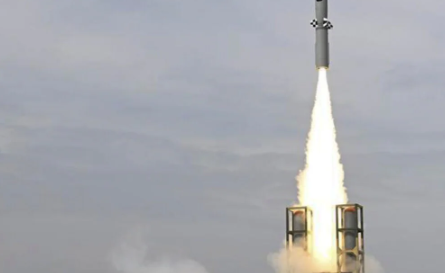DRDO Conducts Successful Flight-Test of Long Range Land Attack Cruise Missile (LRLACM)
The Defence Research and Development Organisation (DRDO) has achieved an important milestone. On November 12, 2024, it conducted the first flight-test of the Long Range Land Attack Cruise Missile (LRLACM). This missile has a range of 1,000 km and was launched from a mobile articulated launcher at the Integrated Test Range in Chandipur, Odisha. This new variant of the Nirbhay LRLACM features several improvements.
Development Background
The LRLACM project received approval from the Defence Acquisition Council in July 2020. The objective was to develop a cruise missile capable of striking targets at a long range. The missile was designed to enhance India’s standoff capabilities. It aims to provide the Indian armed forces with advanced strike options against land targets.
Flight-Test Details
During the recent flight test, all sub-systems performed as expected. The missile successfully met its primary mission objectives. Various range sensors, including Radar and Electro-Optical Tracking Systems, monitored its performance. These sensors ensured comprehensive coverage of the missile’s flight path.
Navigation and Performance
The LRLACM demonstrated waypoint navigation during its flight. It showcased its ability to perform manoeuvres at different altitudes and speeds. The missile is equipped with advanced avionics and software, which enhance its reliability and performance. This capability is crucial for effective strike missions.
The Aeronautical Development Establishment in Bengaluru led the missile’s development. Other DRDO laboratories and Indian industries also contributed to the project. Bharat Dynamics Limited and Bharat Electronics Limited are the primary production partners. They play vital roles in missile development and integration.
Launch Configuration
The LRLACM is designed for multiple launch configurations. It can be launched from ground-based mobile platforms. Additionally, it can be deployed from frontline ships using a universal vertical launch module system. This versatility enhances its operational flexibility.
Strategic Importance
The successful test of the LRLACM marks an important advancement in India’s indigenous missile capabilities. It provides the armed forces with a long-range standoff capability. This capability is similar to that of the U.S. Tomahawk cruise missile. The missile’s terrain-hugging capability allows it to evade enemy radar detection.
Defence Minister Rajnath Singh praised the successful launch. He stated that it paves the way for future indigenous cruise missile development programmes. The LRLACM’s induction will boost India’s defence capabilities and enhance its strategic deterrence in the region.
Important Facts for Exams:
- LRLACM: The Long Range Land Attack Cruise Missile has a range of 1,000 km. It enhances India’s standoff strike capabilities against land targets .
- DRDO: The Defence Research and Development Organisation is responsible for developing defence technologies in India. It plays important role in indigenous missile development and integration.
- Aeronautical Development Establishment: This Bengaluru-based establishment led the development of the LRLACM. It collaborates with various DRDO laboratories and industries for missile technology advancements.
Month: Current Affairs - November, 2024
Category: Defence Current Affairs


